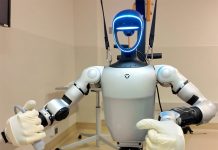
Kidneys are crucial organs in our bodies that filter waste from our blood. When they don’t work well over a long period, we call it chronic kidney disease.
This condition is very serious and affects many people, with over 37 million affected in the U.S. alone.
Many people with this kidney problem also have a bone problem called renal osteodystrophy (ROD). This condition weakens bones over time and makes them more likely to break.
It’s a major problem for patients and doctors alike, as it can lead to pain, deformities, and other health risks. Right now, we don’t have a cure for ROD except for kidney transplants.
The Mystery of Renal Osteodystrophy
Scientists know that ROD comes from changes in the metabolism of bone cells, which are the cells that build and maintain our bones.
But what causes these changes is still a bit of a mystery. That’s why a group of scientists led by Dr. Nicolae Valentin David decided to investigate.
Currently, doctors try to manage ROD by correcting the levels of certain chemicals in the blood, such as phosphate, parathyroid hormone, and vitamin D.
However, this doesn’t seem to be enough, as bone fractures related to chronic kidney disease have doubled over the past two decades.
This points to a serious need for more research into what causes ROD and how to treat it effectively.
The Role of HNF4α
Dr. David’s team made a big step toward understanding ROD. They looked at bone tissue samples from healthy people, people with chronic kidney disease, and mice with ROD.
Using a method called RNA sequencing, they discovered a molecule called HNF4α.
HNF4α is a transcription factor, a type of protein that controls the activity of certain genes.
It’s usually found in the liver, but the researchers were surprised to find it in the bone as well. Even more interesting was that people and mice with ROD had lower levels of HNF4α in their bones.
The Power of Overexpression
In the next part of their experiment, the researchers increased the levels of HNF4α in osteoblasts, which are the cells that build bone, in mice with chronic kidney disease.
This process is called overexpression. The results were remarkable: the mice’s bones became less fragile, and their overall skeletal abnormalities improved.
What Does This Mean for the Future?
This study shows that HNF4α plays a crucial role in bone health and the development of ROD.
Scientists believe that if we can find ways to increase HNF4α levels in people with chronic kidney disease, we might be able to slow down or prevent ROD.
But to make this a reality, we need more research. Dr. David’s team is now studying the role of HNF4α2, a specific form of HNF4α, in bone and kidney health.
They believe that a decline in HNF4α2 levels in bone might be part of a larger issue affecting multiple organs in chronic kidney disease.
By learning more about this, they hope to find ways to not just prevent ROD, but also slow down the decline in kidney function that happens in chronic kidney disease.
It’s an exciting time in this area of research, and the findings could lead to better treatments and improved quality of life for patients with chronic kidney disease.
If you care about bone health, please read studies about how to protect your bones with exercise, and eating prunes may help prevent bone loss in older women.
For more information about bone health, please see recent studies about how often women should have bone tests, and results showing doctors often ignore this bone disease in men.
The study was published in the Journal of Clinical Investigation.
Copyright © 2023 Knowridge Science Report. All rights reserved.



